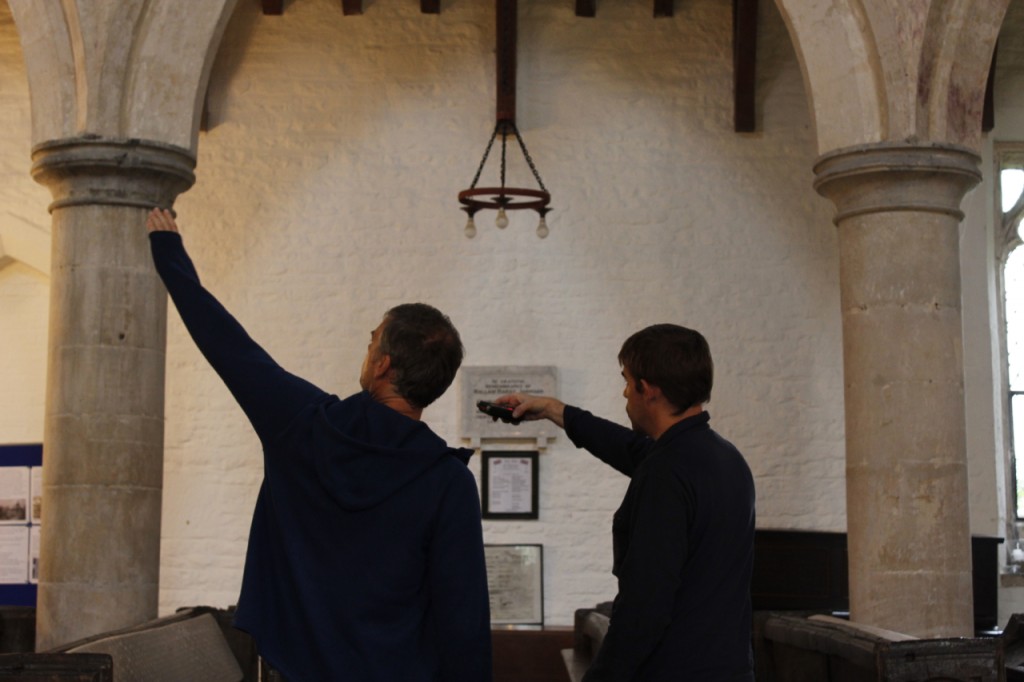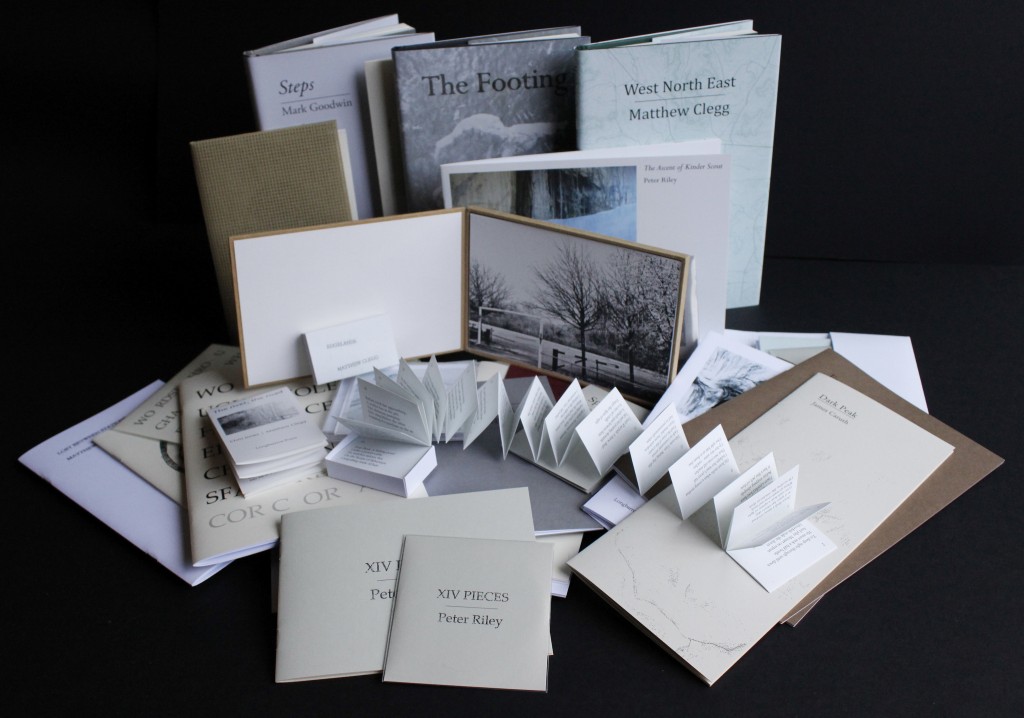Longbarrow Press has been at the forefront of the Sheffield publishing scene for at least ten years now, constantly re-injecting the UK literary scene with a traditional yet progressive elegance. Here, founder and Director of Longbarrow, Brian Lewis provides us with a delicate insight into the evergreen world of publishing.
1. What originally inspired you to set up a publishing press?
The press developed from a collaboration between myself and the Sheffield poet Andrew Hirst (AKA photographer Karl Hurst). We’d conceived a small boxed edition of four poems and photographs, and felt that it would be an interesting challenge to try to produce this ourselves, alongside sequences by Matthew Clegg and Chris Jones (also based in Sheffield). The ethos and the aesthetic were instinctive – that the poem should dictate the format of publication. Since launching the press in 2006, I’ve become much more aware of the extraordinary work that independent publishers like Migrant and Fulcrum were pioneering in the 1960s; it’s informed our sense of the small press as a living, evolving tradition.
2. How important would you say the smaller publishers are to the publishing industry?
The economic value of the smaller publisher is debatable (though small publishers often surprise the industry with successful titles), but their cultural value to the reading public is, I think, increasingly important (albeit harder to quantify). One of the most rewarding aspects of publishing on this scale is the possibility of making a genuine connection with the reader. For example, we aim to make audiences feel part of the events that they’ve taken the trouble to attend; online book orders are carefully packaged with handwritten notes and ephemera. People do appreciate the ‘personal touch’ in an often impersonal world.
3. How is Longbarrow Press funded, and how does that affect the decisions you make as a publisher?
The press is funded through book sales, events, freelance work and my limited savings from a previous full-time job; we don’t receive any money from the Arts Council or other organisations. This means that decisions about what to publish (and when) have to be carefully weighed; we prefer traditional litho printing to print-on-demand, but the cost of litho limits us to publishing just two full-length collections each year. A positive aspect of this constraint is that the development of the books is unhurried. The poets and I can focus on getting the details right, and also support the book after publication (with performances, podcasts and other creative projects) for much longer than we’d be able to manage with a busier publication schedule.
4. How would you personally distinguish Longbarrow Press’ approach to publishing?
Craft, care and collaboration, at each stage of the process.
5. Is there a particular style of poetry you look for, if so what is it, and why?
I’m not sure. The work we’ve published over the last 10 years ranges from formalist to ‘open form’ poetry (sometimes in the same collection). There are strong thematic connections, though. As many of the poets are based in Sheffield, it’s perhaps unsurprising to find some of them exploring shared territory and common ground. The city’s rivers – the Don, the Rivelin, the Loxley – recur in a number of poems, as do other aspects of its landscapes and history. What I find particularly interesting is the interrelationship between these perspectives and forms; as an editor, it’s a privilege to ‘curate’ these relationships. Our walking-themed anthology, The Footing, brings together long poems and sequences by seven poets, each of whom takes the ‘theme’ in a particular direction. They’re not bound by a shared aesthetic, so the creative challenge was to arrange the poems and sequences in such a way that larger thematic ‘arcs’ (e.g. history, nature, memory) emerge as we move through the book. It felt important to make these ‘arcs’ part of the book’s design, while leaving enough space for the individual voice, the singular perspective; and it works, I think.

6. What is your most successful release since you began publishing? And how do you define success at Longbarrow Press?
‘Success’ is hard to measure for a small poetry press. Many of our titles sell slowly, but steadily, over a number of years (a fair amount of this results from personal recommendations from readers, which is encouraging). Whenever a book, a poem or a reading makes a connection with a reader or a listener, I feel that’s a success. Sales of The Footing have remained strong since it appeared in late 2013 (the anthology was five years in the making, so this feels like a vindication!), as have sales of Peter Riley’s pamphlet The Ascent of Kinder Scout, which developed from a series of collaborations with the artist Paul Evans. I’m wary of the dependence on awards and accolades as signifiers of ‘success’, though, and the increased role that ‘prize culture’ has in validating the status of the book. There’s nothing wrong with poets and publishers being recognised and rewarded for their work, but I’m not sure how useful or interesting it is to a wider audience. A list of the poet’s achievements doesn’t help the listener or the reader with the poetry, yet it’s frequently all they’re given by way of introduction.
7. What sort of relationship do you have with poets before and during the publishing process?
It varies greatly. Every poet is different, and each project is different, so the working relationship has to be flexible and responsive – on both sides. The exchanges that take place are (or should be) a form of heightened listening. I have an obligation to speak up if I feel that something isn’t working, and to reflect on any criticism of my own practice as editor, designer, etc. What I would never do is insist on or impose changes; I might argue for some changes to a typescript, and the argument might go back and forth, but the final decision will be the poet’s. If the poet is unhappy with their own published collection, then I’ve failed. I’ve seen too many books compromised by editorial coercion or editorial negligence; if the poet has taken several years to shape a body of work, then the editor should also take care at all stages of the publishing process.
8. What is the medium that you favour the most? And how do you take advantage of the constantly growing range of mediums?
The book still feels exciting and inexhaustible to me, as a physical object, as a vehicle for ideas. Working with sound recordings has enabled so many fresh, creative possibilities in the last few years, though. Most of our recordings are made ‘in the field’ – on riverbanks, in city streets, in sea caves – and I think this offers a particular connection to the world inhabited by the poem that isn’t always available on the page. We’ve also produced a series of audio podcasts that focus on movement through place, and which make a feature of the chance moments, improvised riffs, and close observations that happen ‘in the field’. All these different mediums and practices – including film and collaborations with musicians and visual artists – help us to see and hear the poem anew, on and off the page.
Interview by Charlie Sellings


1 comment